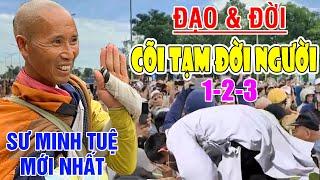
Unlocking the Power Within: The Dynamic Journey of Food Energy in the Human Body
To sustain life, humans must consume food, utilizing the distinctive structure and function of our cellular architecture to convert chemical free energy from the diet into biologically active compounds with high energy. This conversion process, known as cellular respiration, is notably inefficient. Upon closer examination of the distribution of food energy within the human body, it becomes evident that about 50% is lost as heat, 45% is available as adenosine triphosphate (ATP), and the remaining 5% is thermodynamically necessary for the conversion to heat due to the greater entropy of the final products compared to the initial substrates. Ultimately, all energy obtained from food is expended in the form of external work or heat.
In nutritional contexts, the energy from food is quantified in calories. A calorie is technically defined as the amount of heat needed to raise the temperature of 1 g of water by 1 °C. However, this unit is too small for dietary discussions. A food calorie (sometimes denoted as Calorie with a capital C, though not strictly adhered to) is equivalent to 1,000 calories or 1 kilocalorie (kcal). One food calorie is also equal to 4.184 kilojoules. It's not uncommon for a single kilocalorie to be colloquially referred to as a calorie, causing potential confusion for individuals reading nutrition labels and encountering kilocalories in textbooks, scientific publications, patient records, and online sources. This nuance should be understood by healthcare practitioners to communicate effectively with colleagues, patients, and the general public.
In nutritional contexts, the energy from food is quantified in calories. A calorie is technically defined as the amount of heat needed to raise the temperature of 1 g of water by 1 °C. However, this unit is too small for dietary discussions. A food calorie (sometimes denoted as Calorie with a capital C, though not strictly adhered to) is equivalent to 1,000 calories or 1 kilocalorie (kcal). One food calorie is also equal to 4.184 kilojoules. It's not uncommon for a single kilocalorie to be colloquially referred to as a calorie, causing potential confusion for individuals reading nutrition labels and encountering kilocalories in textbooks, scientific publications, patient records, and online sources. This nuance should be understood by healthcare practitioners to communicate effectively with colleagues, patients, and the general public.
Комментарии:
Dance Moms TikTok Edit Compilation P4
Tiktok Edit Tv
Vestuvių muzikantai/Weselni muzykanci "MIX DANCE" Veslav&Ruslan
Ruslan Šilobrit
How To Train Your Cat To Sit
Cat School Clicker Training
Petit escargot - Comptines pour bébés - 2024
Titounis - Comptine bébé - Chanson enfant
Charity Ride Trailpark Mehring 2017
Doktorgravity


























